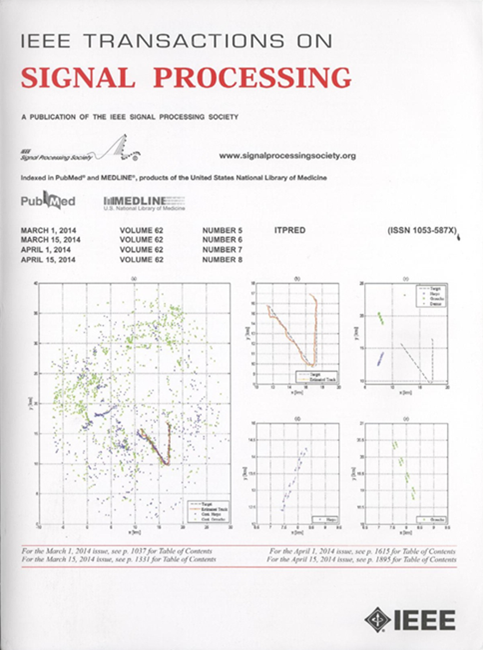空间非平稳xml - mimo信道估计:一种三层广义近似消息传递方法
IF 4.6
2区 工程技术
Q1 ENGINEERING, ELECTRICAL & ELECTRONIC
引用次数: 0
摘要
研究了考虑近场球面波前效应和空间非平稳特性的超大规模多输入多输出(XL-MIMO)系统信道估计问题。由于不同传播路径上SnS特性的多样性,使得多路径并发信道估计变得非常棘手。为了解决这一挑战,我们提出了一种两阶段估计方案,该方案将问题解耦为多个子信道估计任务。为了解决这些子任务,我们引入了一种新的三层贝叶斯推理方案,利用了SnS子通道在空间和角域的相关性和稀疏性。具体来说,第一层捕获角域的块稀疏性,第二层促进空间域的SnS特性,第三层有效地将每个子信道与观测信号解耦。为了实现高效的贝叶斯推理,我们开发了一种将结构化变分消息传递与信念传播规则相结合的三层广义近似消息传递(TL-GAMP)算法。仿真结果验证了所提出的TL-GAMP算法的收敛性和有效性,证明了其在各种信道环境下的鲁棒性,包括NF- sns、NF空间平稳(NF- ss)和远场空间平稳(FF-SS)场景。本文章由计算机程序翻译,如有差异,请以英文原文为准。
Spatially Non-Stationary XL-MIMO Channel Estimation: A Three-Layer Generalized Approximate Message Passing Method
In this paper, the channel estimation problem for extremely large-scale multi-input multi-output (XL-MIMO) systems is investigated with the considerations of near-field (NF) spherical wavefront effects and spatially non-stationary (SnS) properties. Due to the diversity of SnS characteristics across different propagation paths, the concurrent channel estimation of multiple paths becomes intractable. To address this challenge, we propose a two-phase estimation scheme that decouples the problem into multiple subchannel estimation tasks. To solve these sub-tasks, we introduce a novel three-layer Bayesian inference scheme, exploiting the correlations and sparsity of the SnS subchannels in both the spatial and angular domains. Specifically, the first layer captures block sparsity in the angular domain, the second layer promotes SnS properties in the spatial domain, and the third layer effectively decouples each subchannel from the observed signal. To enable efficient Bayesian inference, we develop a three-layer generalized approximate message passing (TL-GAMP) algorithm that combines structured variational message passing with belief propagation rules. Simulation results validate the convergence and effectiveness of the proposed TL-GAMP algorithm, demonstrating its robustness across various channel environments, including NF-SnS, NF spatially stationary (NF-SS), and far-field spatially stationary (FF-SS) scenarios.
求助全文
通过发布文献求助,成功后即可免费获取论文全文。
去求助
来源期刊

IEEE Transactions on Signal Processing
工程技术-工程:电子与电气
CiteScore
11.20
自引率
9.30%
发文量
310
审稿时长
3.0 months
期刊介绍:
The IEEE Transactions on Signal Processing covers novel theory, algorithms, performance analyses and applications of techniques for the processing, understanding, learning, retrieval, mining, and extraction of information from signals. The term “signal” includes, among others, audio, video, speech, image, communication, geophysical, sonar, radar, medical and musical signals. Examples of topics of interest include, but are not limited to, information processing and the theory and application of filtering, coding, transmitting, estimating, detecting, analyzing, recognizing, synthesizing, recording, and reproducing signals.
 求助内容:
求助内容: 应助结果提醒方式:
应助结果提醒方式:


